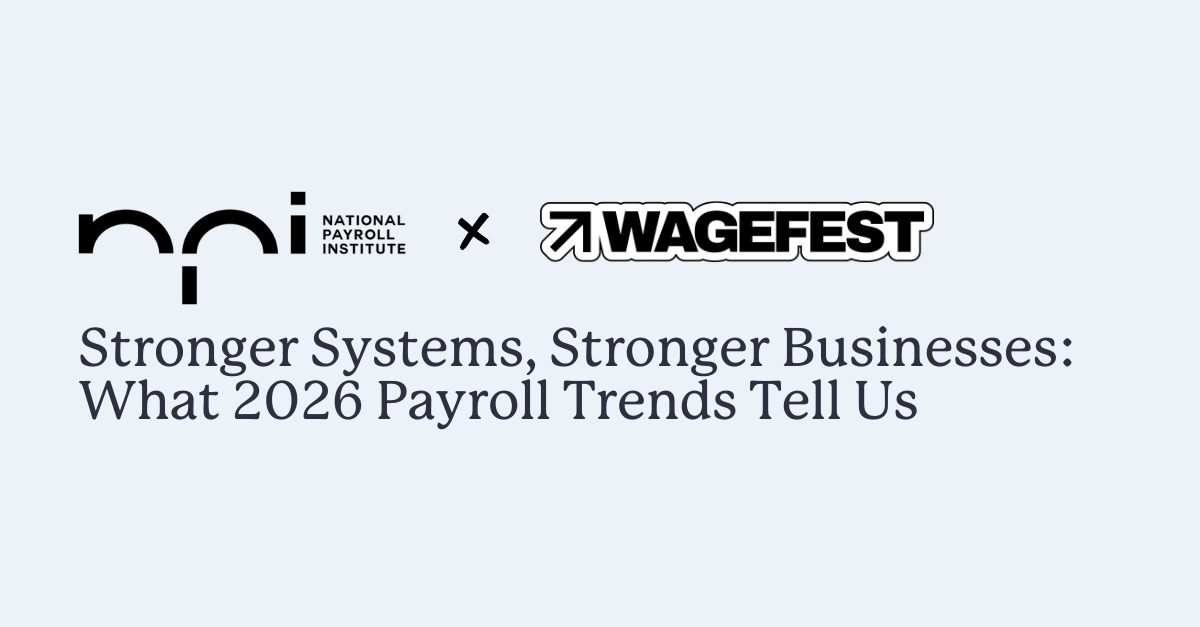Become an insider!
Get our latest payroll and small business articles sent straight to your inbox.
You’re about to make your first hire. It’s a huge step for your business — It also means you need to figure out payroll — and if you’ve never done it before, the timing can feel unclear. If you’re not sure where to start, you’re not alone.
In this first episode of Payroll 101, Wagepoint Community Manager and Certified Payroll Professional Bianca Mueller, CPB, PCP walks through a question every first-time employer asks: “When should I start payroll?”
Spoiler alert — the answer is: before you hire.
Why Timing Matters
As Bianca explains in the video, one of the biggest mistakes new employers make is waiting until after they’ve hired someone to think about payroll.
Doing so can cause:
- Delayed or incorrect pay (never a great first impression)
- Late remittances to the CRA, which can result in penalties and interest
- Extra stress when you’re already managing onboarding and training
Starting early gives you time to get set up with the Canada Revenue Agency (CRA), choose a pay frequency that fits your business, and decide how you’ll manage payroll — all before that first paycheque is due.
Step 1: Open a Payroll Account with the CRA
Before you run payroll, you’ll need a CRA payroll account. This is how the government tracks your business’s payroll deductions, including:
- Income tax
- Canada Pension Plan (CPP) contributions
- Employment Insurance (EI) premiums
When you register, the CRA will assign you a remitter type, which determines how often you need to send those deductions in — typically monthly, quarterly, or accelerated (for larger employers).
If your business already has a Business Number (BN), you’ll simply add a payroll program account (RP) under that same BN.
If you don’t have a BN yet, you can register for both your BN and payroll account at the same time through the CRA. The process is quick and can be completed online.
Pro tip: If you’re using payroll software like Wagepoint, it can automatically calculate and remit these payments for you — so you can stay compliant without juggling due dates.
Step 2: Choose Your Pay Frequency
How often will your employees get paid?
In Canada, the most common pay frequencies are:
| Pay Frequency | What It Means | Pros | Cons |
|---|---|---|---|
| Weekly | Employees are paid every week – 52 times a year | Great for employee cash flow flexibility and satisfaction | Higher employer administrative costs and workload |
| Bi-weekly | Employees are paid every two weeks –26 times a year | Predictable scheduling; aligns with most payroll cycles | Slightly more frequent processing |
| Semi-monthly | Employees are paid twice a month – 24 times a year | Easier for budgeting and reporting | Pay periods don’t always align perfectly with work weeks |
As Bianca points out, it’s important to balance your team’s needs with your business’s cash flow.
For example, a small trade business might prefer bi-weekly pay for consistency, while a café or retail shop might choose weekly pay to help hourly staff manage their income.
There’s no “one-size-fits-all” answer — what matters most is choosing a schedule you can maintain reliably.
Step 3: Decide How You’ll Manage Payroll
Once your CRA payroll account is ready and your pay frequency is set, the next step is to decide how you’ll actually run payroll.
You have three main options:
1. Do it manually
You can calculate deductions by hand or in a spreadsheet, pay employees via e-transfer, and submit remittances through the CRA’s website or online banking. While it can feel cost-effective, this method doesn’t account for your time and potential errors — especially as your team grows.
2. Work with a payroll professional
Bookkeepers, accountants, or payroll service providers are more than happy to manage payroll on your behalf. This option saves you time and compliance headaches but comes with their service fee. You’ll still be responsible for providing accurate timesheet sheet information and approvals.
3. Use payroll software
Cloud-based payroll software like Wagepoint automates the entire process — from calculating deductions and remitting taxes to issuing pay stubs and T4s. It’s accurate, CRA-compliant, and scales easily as your business grows.
For most small business owners, the ideal setup is a combination of payroll software and a trusted bookkeeper or accountant — giving you peace of mind through expert guidance, accuracy through automation, and full control without the stress or manual math.
Getting Started the Right Way
Starting payroll isn’t just a box to check — it’s the foundation for paying your team correctly, staying compliant, and building trust as an employer.
Here’s a quick recap of what to do before your first payday:
- Register for a CRA payroll account.
- Choose a pay schedule that balances your needs and your employees’.
Select your payroll management method — whether that’s manual, professional, or through software like Wagepoint.
With those steps in place, you’ll be ready to pay your new employee (or yourself!) confidently and on time.
Watch the full video with Bianca Mueller, CPB, PCP, Wagepoint’s Community Manager, to see exactly how to get started — and keep an eye out for future episodes of Payroll 101 designed to make payroll simpler, faster, and most importantly, less stressful.
Ready to see how easy payroll can be?
Book a demo with Wagepoint to explore how our software handles the setup, calculations, and CRA remittances for you.











